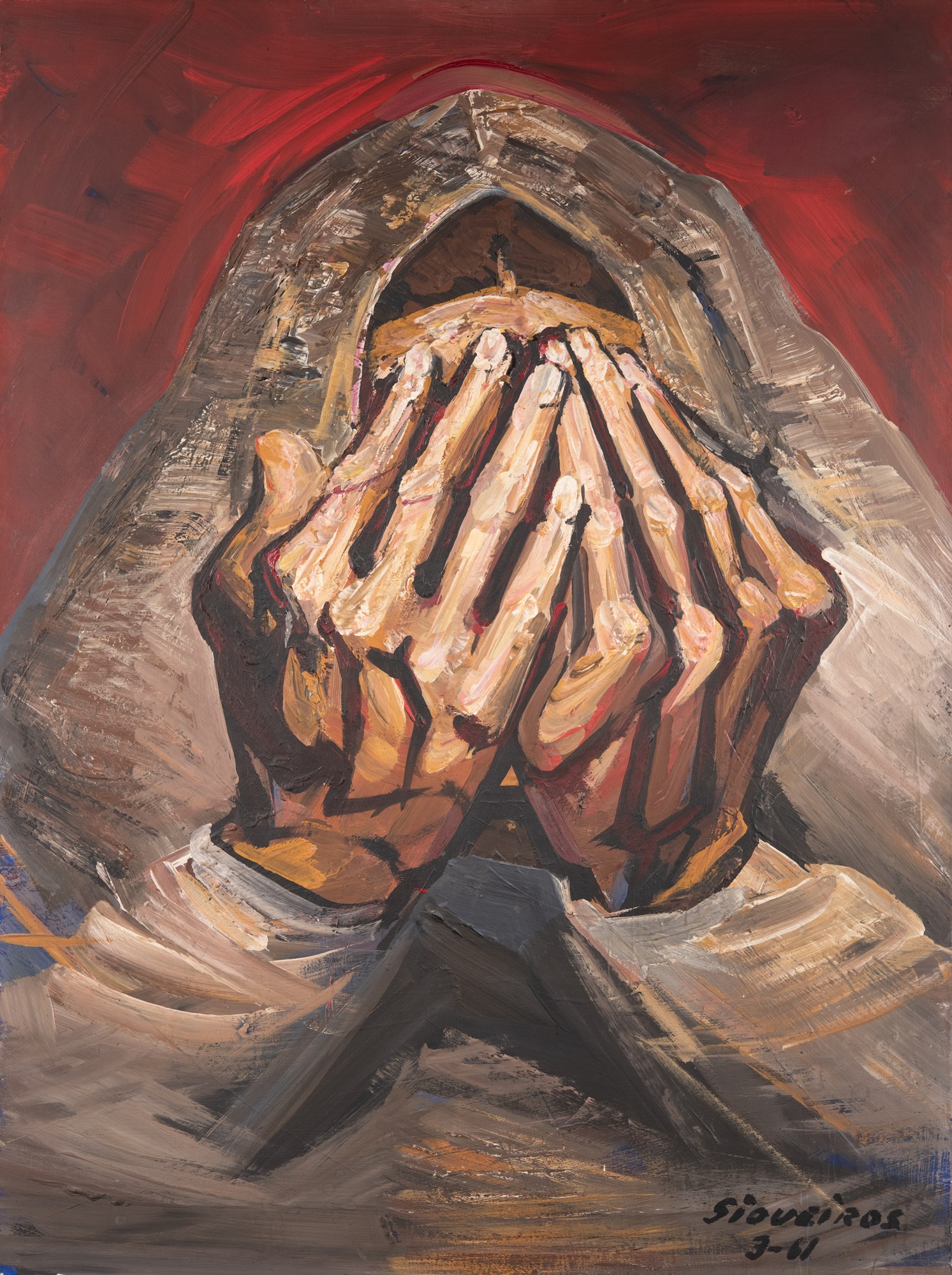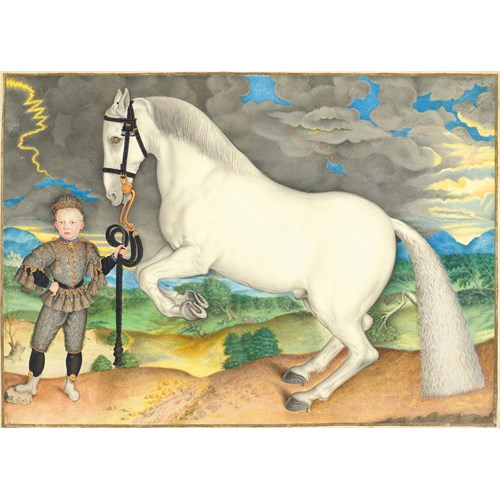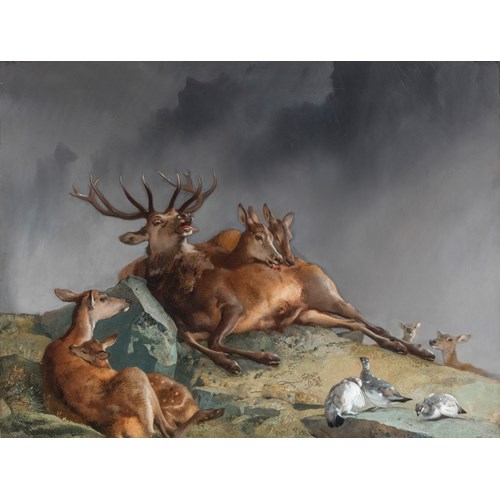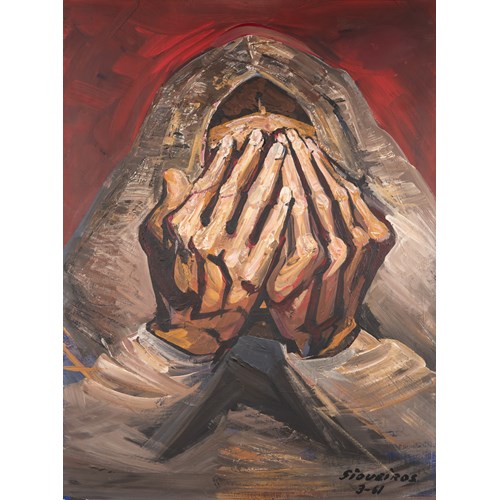David Alfaro Siqueiros
Desesperación
Date March 1961
Epoque 20th century
Medium Acrylic on panel
Dimension 81.28 x 60.96 cm (32 x 24 inches)
Civil disobedience came to a head on December 30 when during a student protest in Chilpancingo, an electrician was shot by law enforcement for hanging a protest sign. It sparked a massive demonstration which turned deadly when the 24th Infantry Battalion was ordered by the Governor to quell the unrest. The soldiers fired on the crowd, leaving fifteen dead and many more wounded.
The present work is one of a series of approximately 204 cárcel preventive paintings, most of them completed in cell 36 of the Lecumberri Prison where David Alfaro Siqueiros was convicted of 'social dissolution' and sentenced for his involvement with the student protests of 1960. He was pardoned by President Adolfo Lopez Mateos in 1964 after nearly four years of incarceration. Of this period, Siqueiros remarked, "Prison transformed me into an easel painter. I had always painted murals, and my earlier portable works were simply sketches for murals. Strictly speaking, I had never done easel painting until I found myself in jail. I had to think in terms of small paintings—my cell measured only 6 by 12 feet, and the light came from only a tiny window" (quoted in New York Times, "Prison Paintings of Siqueiros Draw Leftists and Art Lovers," September 13, 1964, p. 82.) The present work is exceptional for its sheer size—it is among his largest formats for his cárcel preventive paintings with the majority produced under 18 x 12 inches.
In Desesperación, Siqueiros uses vigorous and viscous brushstrokes with a high-keyed palette to evoke the visceral impact of the violence. He depicts a faceless woman represented by her hands as an archetype for those who toil and care for humankind. Through the compositional triangulation of her form and hands, Siqueiros imbues gravitas and monumentality to this natural and highly personal expression of weariness and empathy. Desesperación captures the universal experience of grief and tragedy.
Date: March 1961
Epoque: 20th century
Medium: Acrylic on panel
Signature: Signed and dated 'Siqueiros 3-61' (lower right), signed again, dated and inscribed 'Cárcel Preventiva México Marzo de 1961 Estudio Para Figuras De Mi Mural Post-Cárcel 'Chilpancingo'' (on the reverse)
Dimension: 81.28 x 60.96 cm (32 x 24 inches)
Provenance: Galería de Arte Misrachi S.A., Mexico City, no. 2-23/M.
Luis Coq Guichard Collection, Michoácan (acquired from the above)
Sale, Bonhams, NY, November 15, 2023, lot 48
Plus d'œuvres d'art de la Galerie







_T637127970451590262.jpg?width=500&height=500&mode=pad&scale=both&qlt=90&format=jpg)

